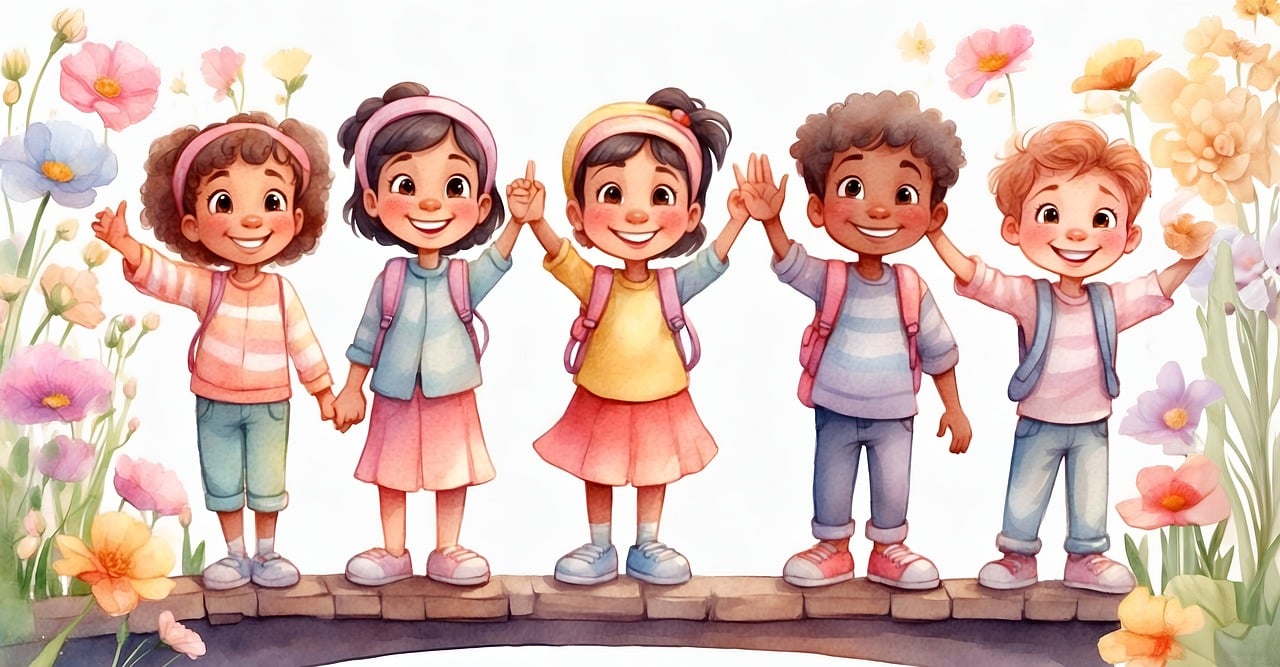Inclusion and Diversity: A Child’s Guide

In today’s colorful and ever-changing world, learning to embrace diversity is more than just a lesson—it’s a life skill that can open doors, build lasting friendships, and make the world a more welcoming place for everyone. Whether you’re a child who feels different because of your background or someone who’s curious about connecting with others who aren’t like you, the journey toward understanding and inclusion is one that will enrich your life in countless ways.
1. Explore Different Cultures
Imagine you’re an explorer, setting out on a journey to discover new lands. Each culture is a vibrant world waiting to be explored. Dive into books, watch movies, or even try cooking a dish from a culture that’s different from your own. This isn’t just about learning facts—it’s about understanding the stories, traditions, and values that make each culture unique. For instance, if your classmate celebrates Diwali, ask them about the festival of lights and what it means to them. This way, you’re not just learning—you’re connecting.
2. Cultivate Curiosity Over Judgment
Picture yourself in a garden full of different flowers. Each flower, like each person, has something special to offer. When you encounter someone who dresses or acts differently, let your curiosity blossom instead of jumping to conclusions. Ask gentle questions like, “I love your outfit! Can you tell me about it?” This simple act of curiosity turns what could be a barrier into a bridge.
3. Join Diverse Groups to Broaden Your Horizon
Think of joining a new club or team as planting seeds in your garden of experiences. The more varied the group, the richer the experience will be. For example, if you join a mixed-background soccer team, you’re not just learning to play better—you’re learning to think differently, work with others, and appreciate diverse perspectives. This teamwork, enriched by diversity, makes the game more exciting and the friendships more meaningful.
4. Stand Tall Against Bullying
Imagine you’re a superhero with the power to make others feel safe and valued. When you see someone being bullied because they’re different, use your voice as your superpower. Stand up and say, “We all belong here, and we all deserve respect.” This act of courage can change someone’s world and create a ripple effect of kindness and inclusion in your community.
5. Celebrate Differences
Picture your school or neighborhood as a big, bright festival where every stall offers something unique. By celebrating each other’s differences—whether it’s through music, food, or traditions—you’re adding color and joy to this festival. Organize or participate in events like a “Diversity Day” where everyone can share a piece of their culture. This isn’t just fun; it’s a way to show that every person’s background is something to be proud of.
6. Walk in Others’ Shoes with Empathy
Think of empathy as a pair of magical shoes that let you walk in someone else’s footsteps. If a new student seems shy or lonely, imagine how you would feel in their place. A smile, a kind word, or an invitation to sit together at lunch can make them feel like they belong. This simple act of empathy can be the start of a friendship that helps both of you grow.
7. Use Inclusive Language
Words are powerful—they can build someone up or tear them down. Instead of saying, “You’re pretty good for a girl,” say, “You’re an amazing player!” This shift in language isn’t just about being polite; it’s about recognizing everyone’s worth equally. By choosing your words carefully, you create an environment where everyone feels valued and respected.
8. Collaborate Across Differences
Imagine working on a group project where everyone brings something different to the table. One person might have great ideas, another might be good at organizing, and someone else might be creative with design. When you collaborate with people from diverse backgrounds, you’re combining these strengths to create something extraordinary. For example, in a school project, you might find that brainstorming with friends who think differently leads to innovative solutions you hadn’t considered before.
9. Build Friendships That Cross Boundaries
Friendships are like bridges that connect different worlds. When you make friends with someone from a different culture, you’re not just adding another person to your life—you’re expanding your world. Invite a friend from a different background to hang out, share stories, and learn from each other. These friendships help you see beyond the surface and understand the richness that diversity brings to your life.
10. Reflect on Your Own Biases
Imagine you’re a detective, searching for clues about how you think and feel. Every now and then, take a moment to reflect on your actions and thoughts. Ask yourself, “Do I treat people differently because of their background?” If you find any biases, don’t be hard on yourself—use it as an opportunity to learn and grow. This self-awareness is key to becoming truly inclusive.
The Bright Future of Inclusion
As you journey through these steps, picture a future where every child—no matter their background—feels safe, included, and valued. By embracing diversity, you’re helping to create a world where differences are celebrated, not feared. You’ll become someone who can navigate any environment with empathy, understanding, and confidence.
The Power of Inclusion and Diversity
Studies have shown that embracing diversity doesn’t just make communities stronger—it makes them smarter and more creative too. Research by McKinsey & Company found that diverse teams are more innovative and successful, while schools that promote diversity see students develop better critical thinking skills and empathy. By practicing these tips, you’re not just preparing for school or sports—you’re preparing for life.
GSR Tips & Tricks
How best to use Goalstar Rewards to help your child achieve their goals? How It Works
Enjoy 4 weeks of free trial for each child. Register to Start 4 Weeks Free Trial!
The following link provides useful information for building awareness of diversity and inclusion in children:
•15 Top Tips for Teaching Tolerance and Diversity to Young Children
 \
\
